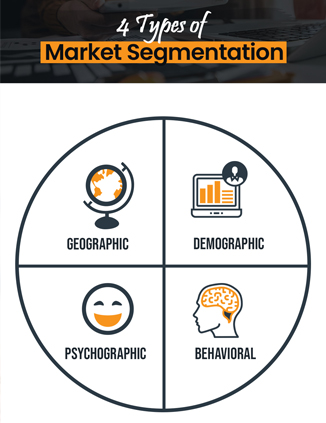As your business expands overseas, you’ll want to build relationships with your ideal international clients. These are the prospects that are most in need of your services, who will get the most value from your offering. They are the most likely to buy from you, and most likely to generate maximum revenue for your company over the long term. Being able to locate and speak to those prospects depends on knowing who your ideal international client (IIC) is, what problems they have that you can solve, and where to find them.
Too many companies – including firms that have been selling internationally for some time – don’t have a clear idea about who their IIC is, or what that client wants. They either take a ‘one size fits all’ approach and hope for the best, and/or they assume that international clients will want the same thing as clients at home.
These are problems that no amount of marketing can fix. If you take a general approach and base your strategy for targeting international clients on assumptions, it’s likely that neither your offering nor your marketing are going to connect with your ideal client, because you’re operating on guesswork. This phenomenon is true in the domestic market and it becomes even more pronounced when you go offshore.
The global marketplace is competitive. Knowing who your IIC is and what they value should drive every facet of your international business. From the product you offer and how you work with your clients, to the text and images you use on your website, to what you post on social media, it all needs to be specifically targeted to a specific set of values and desires.
Defining the Ideal International Client
To reach your IICs and solve their problems, you must find out what their problems really are, not just what you think they are.
It’s not rocket science, but it does take work.
The first step is segmentation.
Segmentation
As you expand your business internationally, the number of people you can sell to goes through the roof, and it’s likely that you’ll have more than one ideal client. Segmenting the market allows you to narrow down the ocean of people you could be speaking to and maximise the likelihood that your message will reach people who want to hear from you.
Segmentation is dividing clients into sub-groups based on shared characteristics. When you segment, you recognise differences between groups of customers and identify their needs, enabling you to offer a more personalized and targeted experience. Segmentation also allows you to:
- Create stronger marketing messages by avoiding generic, vague language that speaks to a broad audience. Instead, you can use direct messaging that speaks to the needs, wants, and unique characteristics of your target audience.
- Identify the most effective marketing tactics. When you know the audience you are targeting, you can determine the best solutions and methods for reaching them.
- Design hyper-targeted ads. On digital ad services, you can target audiences by their age, location, purchasing habits, interests, and more. When you use market segmentation to define your audience, you know these detailed characteristics and can use them to create more effective, targeted digital ad campaigns.
- Differentiate your brand from competitors. Instead of blending in with other brands, you can differentiate your brand by focusing on specific customer needs and characteristics.
- Build deeper customer affinity. When you know what your customers want and need, you can deliver and communicate offerings that uniquely serve and resonate with them.
- Identify niche market opportunities. Niche marketing is the process of identifying segments of industries and verticals that have a large audience that can be served in new ways. When you segment your target market, you can find underserved niche markets that you can develop new products and services for.
- Stay focused. Targeting in marketing keeps your messaging and marketing objectives on track. It helps you identify new marketing opportunities and avoid distractions that will lead you away from your target market.
How should I segment my international market?
The answer depends on your objectives.
There are as many different types of segmentation as there are goals to be pursued. The first step is to define what you want to achieve.
You might be thinking “isn’t the real goal always to maximise revenue?” and of course that’s true. In an ideal world, you’d segment the market by predicting how much revenue you could expect to earn by converting a prospect into a client and using that prediction to decide which prospects you’d pay the most attention to. This is called “tiered segmentation”.

Unfortunately, tiered segmentation is extremely difficult to do well because it’s hard to tell exactly how much revenue your company can earn from a given customer. For instance, if you were selling B2B, you’d need to know the details of your prospects’ future needs, their company’s future plans and the dynamics of their industry, and lots of other small details about how they operate. To do tiered segmentation really well, you’d need to know your prospect’s company better than they know it themselves.
Even though you can’t predict exactly how much revenue you’ll earn from a given customer, you can come up with a few criteria for segmenting the market. This will give you a set of prospects who are more likely to need what you offer and more likely to spend money on what you can do for them.
- Geographic segmentation
- Demographic segmentation
- Psychographic segmentation
- Behavioral segmentation
Within each of these types of market segmentation, multiple sub-categories further classify audiences and customers. So how do we apply them in different contexts?
Here’s two Australian examples of companies that are targeting overseas markets:
Minnow Designs is run by co-founders Lorraine Cherry Nguyen and Stacey Fisher. The company makes specialty footwear – swimmable shoes for babies and children, sells B2C and is targeting markets across Asia and the United States.
Crawford Boots is run by Penny Crawford, a podiatrist turned entrepreneur. It sells specialised waterproof, injury-reducing footwear for people working on wet, unstable surfaces. Its customers are companies that have employees working in those conditions. Crawford Boots is pursuing opportunities in the United States and Canada.
Geographic Segmentation
Geographic segmentation is the simplest type of market segmentation and is an obvious starting point when we’re segmenting for international markets, as most businesses will want to begin by targeting one or two specific countries.
Geographic segmentation groups customers based on geographic parameters like:
- Country
- State
- Postcode
- City
- Radius around a certain location
- Climate
- Urban or rural
It can refer to a defined geographic boundary (such as a city or postcode) or type of area (such as the size of city or type of climate).
Minnow Designs will almost certainly segment its markets geographically by targeting customers who spend a lot of time at the beach. These will be people who live in warm climates, by the coast.
Crawford Boots will use geographic segmentation to focus their efforts on states in North America where there is a lot of mining activity and where mining companies have chosen to headquarter.
Demographic Segmentation
Demographic segmentation is one of the most popular and commonly used types of market segmentation. In a B2C context, it refers to statistical data about a group of people including:
- Age
- Gender
- Income
- Location
- Family Situation
- Annual Income
- Education
- Ethnicity
Minnow Designs uses demographic segmentation to target parents of children under 12 years of age, with high income, living in coastal areas where children spend time in the water.
To segment a B2B market, we use ‘firmographics’, which are for businesses what demographics are for people. Firmographics include things like:
- Industry
- Location
- Company size
- Status/structure
- Performance
- Job function
The basic idea behind firmographics is that similar companies will face similar problems and therefore will have a similar level of need for your product or service. The more companies have in common, the more similar their needs will be.
Crawford Boots uses firmographics to target Occupational Health and Safety managers at large underground mining companies (ex. 500+ employees), who have the ability to make purchase decisions for their teams.
Psychographic Segmentation
- Personality traits
- Values
- Attitudes
- Interests
- Lifestyles
- Psychological influences
- Subconscious and conscious beliefs
- Motivations
- Priorities
Psychographic segmentation factors are subjective and require research to uncover and understand. This makes them slightly more difficult to identify than demographics or firmographics.
In a B2C context for example, Minnow Designs may choose to focus on customers who value quality and fashion.
In the B2B context, psychographic factors can include aspects of company culture: what a firm’s values are, whether or not it has a hierarchical decision-making structure, what its policies around equal opportunity are and whether it is environmentally aware.
For instance, Crawford Boots may target companies which explicitly specify workplace safety as a company value.
Behavioral Segmentation
- Purchasing habits
- Spending habits
- User status
- Brand interactions
Behavioral segmentation requires you to know about your customer’s actions. These activities may relate to how a customer interacts with your brand or to other activities that happen away from your brand.
In the B2C space, Minnow Designs may choose to target customers who play water sports frequently.
Crawford Boots, on the other hand may focus on companies that have recently launched a workplace injury reduction campaign or on OH&S managers who are assessed on their ability to reduce workplace injuries and increase productivity.
So how do we use these segmentation parameters to divide an international market? I’ll be covering it in my next post.







